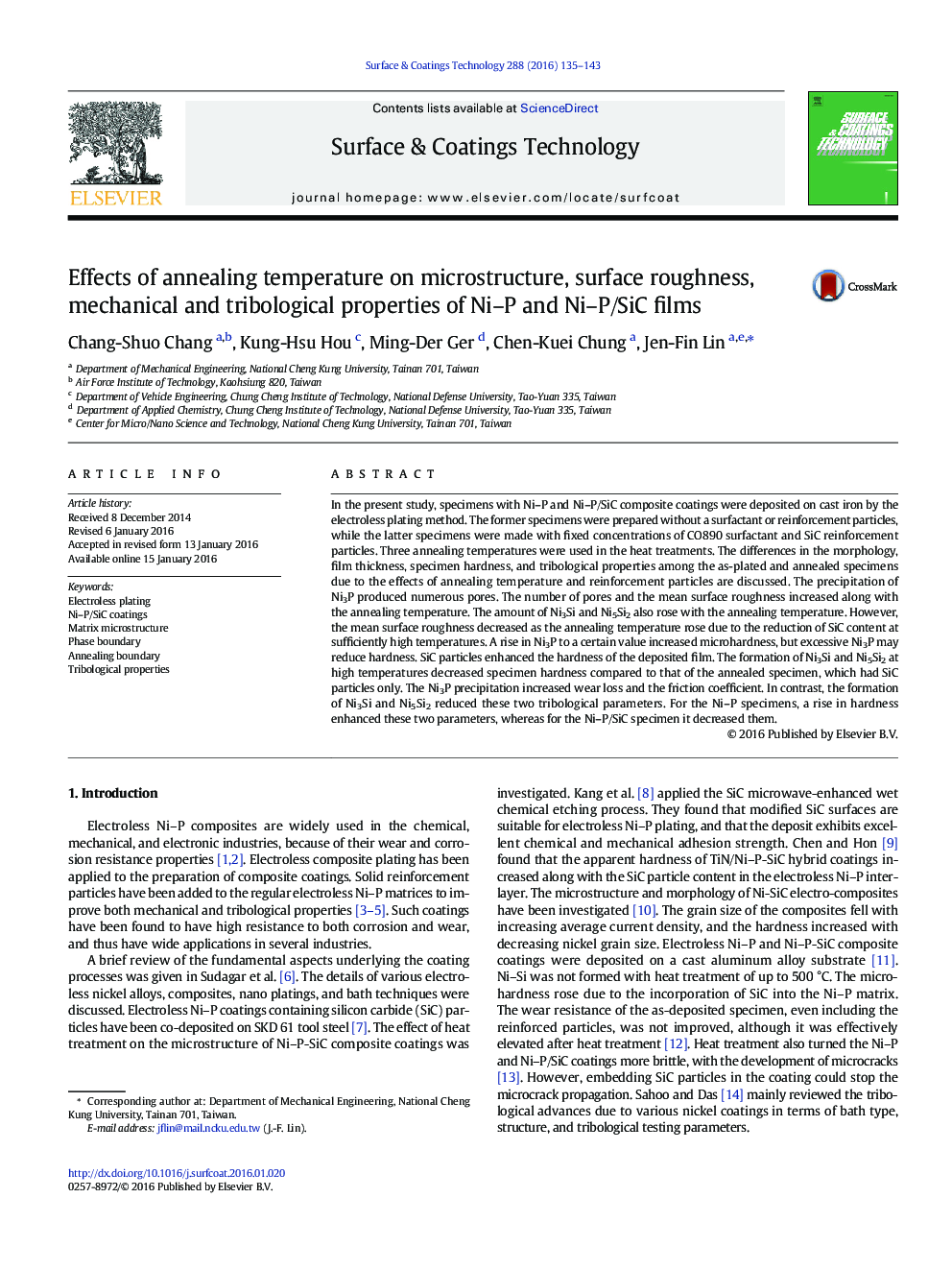| Article ID | Journal | Published Year | Pages | File Type |
|---|---|---|---|---|
| 1656713 | Surface and Coatings Technology | 2016 | 9 Pages |
Abstract
In the present study, specimens with Ni-P and Ni-P/SiC composite coatings were deposited on cast iron by the electroless plating method. The former specimens were prepared without a surfactant or reinforcement particles, while the latter specimens were made with fixed concentrations of CO890 surfactant and SiC reinforcement particles. Three annealing temperatures were used in the heat treatments. The differences in the morphology, film thickness, specimen hardness, and tribological properties among the as-plated and annealed specimens due to the effects of annealing temperature and reinforcement particles are discussed. The precipitation of Ni3P produced numerous pores. The number of pores and the mean surface roughness increased along with the annealing temperature. The amount of Ni3Si and Ni5Si2 also rose with the annealing temperature. However, the mean surface roughness decreased as the annealing temperature rose due to the reduction of SiC content at sufficiently high temperatures. A rise in Ni3P to a certain value increased microhardness, but excessive Ni3P may reduce hardness. SiC particles enhanced the hardness of the deposited film. The formation of Ni3Si and Ni5Si2 at high temperatures decreased specimen hardness compared to that of the annealed specimen, which had SiC particles only. The Ni3P precipitation increased wear loss and the friction coefficient. In contrast, the formation of Ni3Si and Ni5Si2 reduced these two tribological parameters. For the Ni-P specimens, a rise in hardness enhanced these two parameters, whereas for the Ni-P/SiC specimen it decreased them.
Related Topics
Physical Sciences and Engineering
Materials Science
Nanotechnology
Authors
Chang-Shuo Chang, Kung-Hsu Hou, Ming-Der Ger, Chen-Kuei Chung, Jen-Fin Lin,
